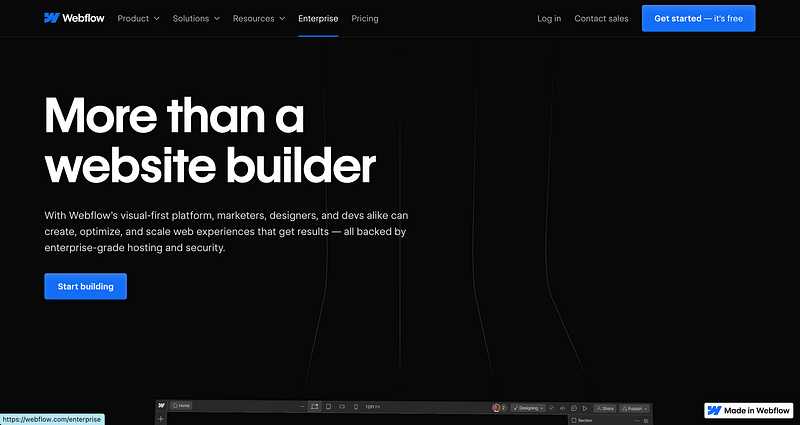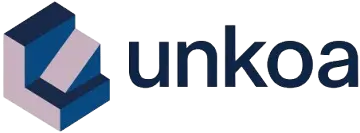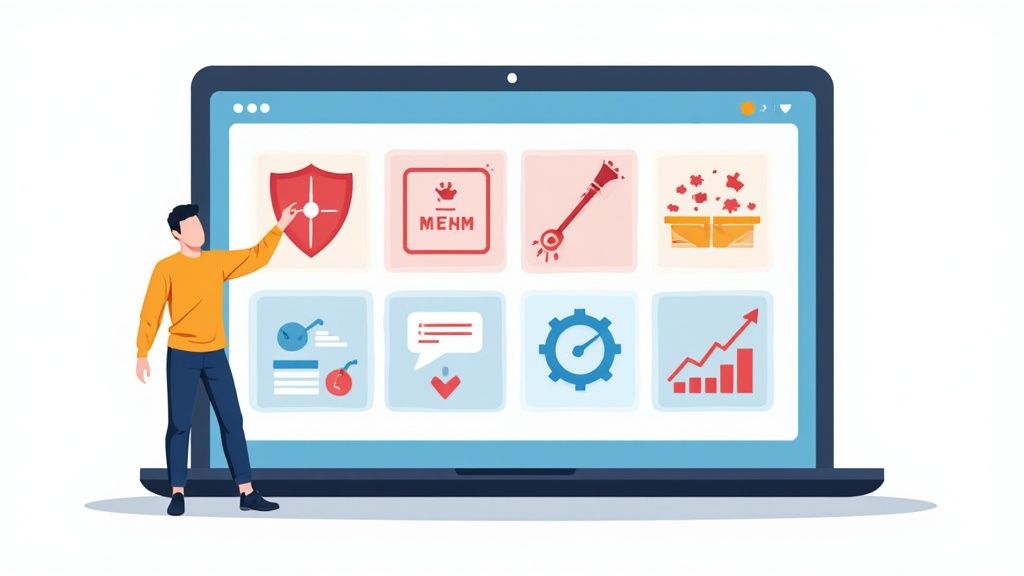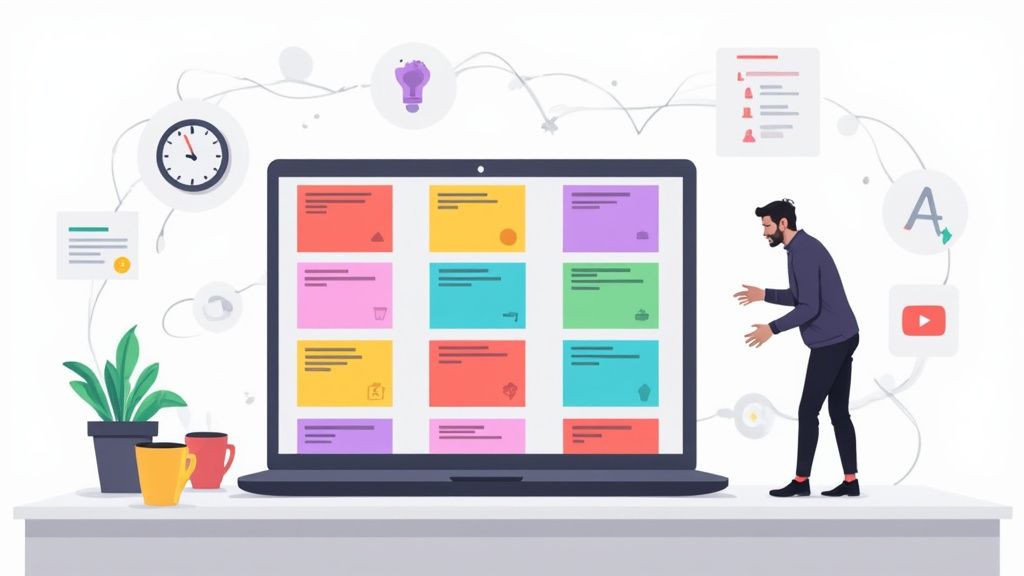Using Webflow as a Selling Point for Web Design Services
In today’s competitive market, web design agencies must differentiate themselves from competitors by showcasing not only their design…

In today’s competitive market, web design agencies must differentiate themselves from competitors by showcasing not only their design skills but also the tools they use. Webflow, a no-code website development platform, offers a powerful suite of features that can significantly enhance the value of your services. Whether you’re pitching to small businesses, startups, or large corporations, positioning Webflow as a core component of your process can give you a competitive edge. Here’s how Webflow’s features can be leveraged as a selling point when pitching web design services to clients.
1. Design and Development All-in-One
Webflow allows designers to create fully responsive and interactive websites without the need for extensive coding. This means that the same person who designs the website can also handle its development, drastically reducing the need for a separate developer. When pitching to clients, emphasize that Webflow helps streamline the design and development process, which leads to quicker project turnaround and fewer opportunities for miscommunication between teams. Highlighting this benefit can reassure clients that the project will be completed efficiently, without sacrificing quality.
2. Faster Project Delivery
Clients often prioritize quick project delivery, especially in fast-paced industries. Webflow’s visual design interface, coupled with the ability to export production-ready code, significantly reduces the time it takes to get a website live. Unlike traditional web development, where front-end and back-end coding can be time-consuming, Webflow empowers designers to build complex websites in a fraction of the time. For a client, the quicker their website is live, the sooner they can start reaching their audience, driving sales, or achieving their business goals. This faster project delivery can be a major selling point.
3. Customizable and Scalable Websites
Webflow offers an impressive level of customization. While it provides a no-code interface, it also allows advanced users to integrate custom code, which means designers aren’t limited by templates or pre-built modules. Clients will appreciate that their website won’t look like a cookie-cutter template but will instead be tailored to their brand and business needs. Additionally, Webflow sites are highly scalable, making it a great platform for growing businesses. You can build a website that evolves with the client’s needs, offering an adaptable solution for their future growth.
4. CMS Integration Without Complexity
For businesses that require dynamic content, such as blogs, portfolios, or e-commerce websites, Webflow’s Content Management System (CMS) offers an intuitive solution. The Webflow CMS allows for easy content updates without needing to dive into the back-end code. For clients who want to manage their website’s content post-launch, Webflow’s CMS is user-friendly, saving them time and money by eliminating the need to hire a developer for every minor change. When pitching your services, highlight how the CMS can empower clients to update their site independently without relying on technical knowledge.
5. Built-in SEO Tools
A well-designed website is only as good as the traffic it attracts. Webflow includes robust SEO tools, allowing you to optimize your client’s site for search engines from the ground up. By offering built-in features like customizable meta titles, descriptions, alt text, and automatic sitemaps, Webflow makes it easy to build SEO-friendly websites. Emphasizing Webflow’s SEO capabilities during your pitch can reassure clients that their website will not only look great but also perform well in search engine rankings, driving organic traffic and potential leads to their business.
6. Responsive Design
In today’s mobile-first world, responsive design is non-negotiable. Webflow automatically ensures that websites look and perform well on any device — whether it’s a desktop, tablet, or smartphone. You can also customize the design for each device individually, allowing for a truly optimized user experience. When pitching to clients, emphasize that a responsive website designed on Webflow will help improve user engagement, reduce bounce rates, and ensure a positive experience for all visitors, regardless of the device they’re using.
7. E-Commerce Capabilities
For clients looking to build or expand their online store, Webflow’s e-commerce functionality is a major selling point. With Webflow, you can design fully customizable e-commerce websites without the constraints of traditional platforms like Shopify or WooCommerce. Webflow’s e-commerce features allow for complete control over the checkout experience, product pages, and even transactional emails. Plus, the platform integrates with payment processors, inventory management systems, and more. Pitching Webflow as a solution for e-commerce can be particularly compelling for businesses looking for flexibility and creative freedom in their online store’s design.
8. Hosting and Security
Webflow offers hosting on a global network powered by Amazon Web Services (AWS) and Fastly, ensuring fast loading times and reliable uptime for clients’ websites. Security is also a priority, with SSL certificates provided for every site, automatic backups, and updates handled on Webflow’s end. When discussing hosting and security with potential clients, the fact that Webflow’s infrastructure is both reliable and secure can give peace of mind, reducing their risk and the likelihood of technical issues post-launch.
9. Ongoing Maintenance and Support
Webflow reduces the need for ongoing maintenance compared to traditional web development. Because it’s a cloud-based platform, updates and bug fixes are handled by Webflow, rather than the designer or developer. Clients will appreciate that their website will always be running the latest version without the need for costly and time-consuming manual updates. Highlighting this during your pitch can reassure clients that their investment in a Webflow website will continue to pay off, with minimal effort on their part.
10. Client-Friendly Interface
One of Webflow’s most underrated features is its ease of use for clients. After the initial design and launch, clients can log into their Webflow account to make minor edits, manage content, or track site performance using the platform’s built-in analytics. Offering clients a platform where they can have more control without needing technical expertise is a strong selling point. It shows that your services not only provide immediate value but also empower them to maintain and manage their website long after the project is completed.
Conclusion
When pitching web design services, it’s essential to offer clients a solution that is not only visually appealing but also functional, scalable, and easy to manage. Webflow provides a comprehensive set of tools that meet these needs, making it a strong selling point for any web design project. By emphasizing Webflow’s ability to streamline design and development, offer full customization, ensure SEO readiness, and provide long-term scalability, you can demonstrate that your web design services are future-proof, cost-effective, and tailored to your client’s unique needs.
Leveraging Webflow in your pitch can set you apart from competitors, positioning you as a forward-thinking, efficient, and client-focused designer.





